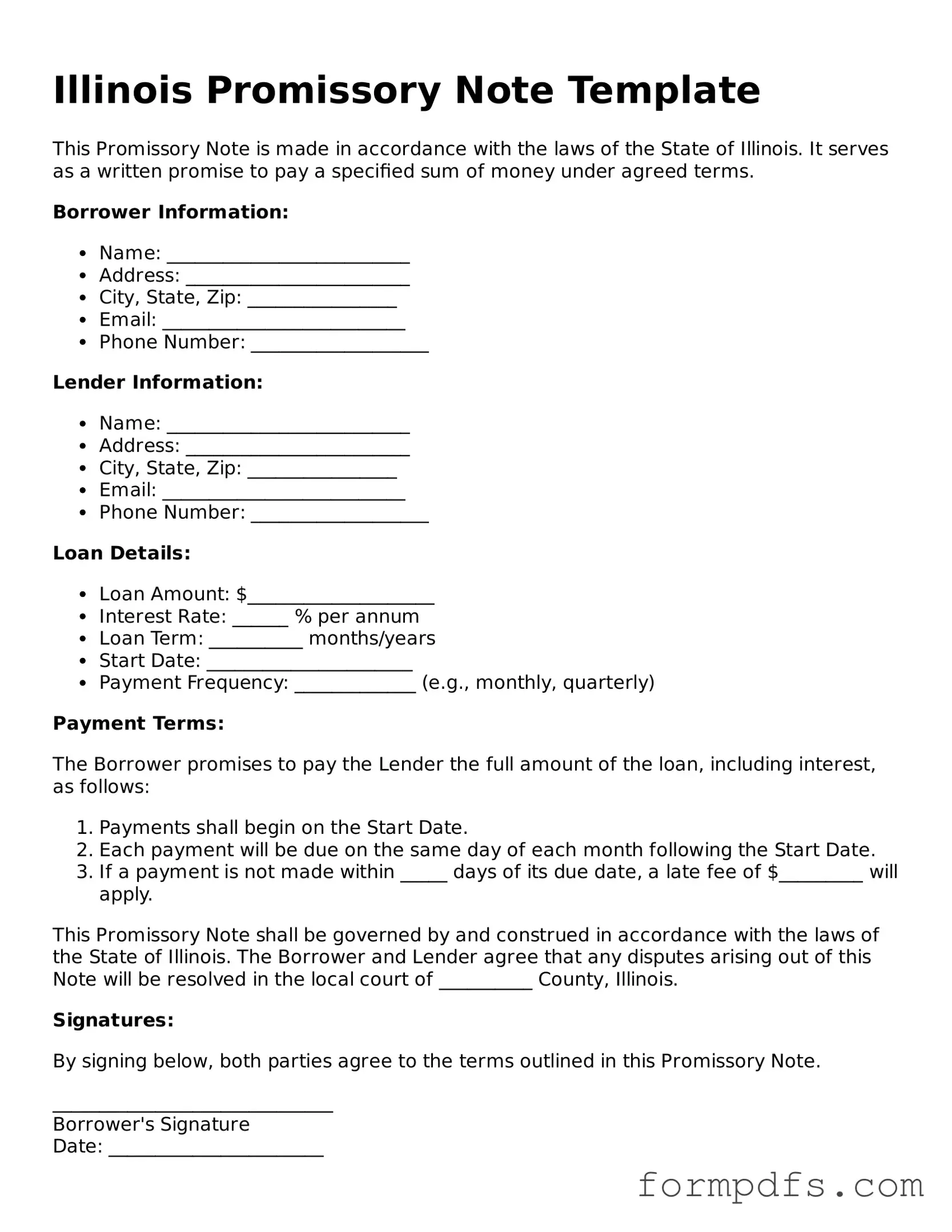What is a promissory note?
A promissory note is a written promise to pay a specific amount of money to a designated person or entity at a specified time or on demand. It's a legal document that outlines the terms of the loan, including the amount borrowed, interest rate, and repayment schedule.
Why would I need an Illinois promissory note?
If you are lending or borrowing money in Illinois, a promissory note provides clarity and security for both parties. It serves as evidence of the debt and the terms agreed upon, helping to prevent misunderstandings or disputes down the line.
What should be included in an Illinois promissory note?
Key elements of a promissory note include the names and addresses of the borrower and lender, the principal amount, interest rate, payment schedule, due date, and any penalties for late payments. Additionally, it’s wise to include provisions for what happens in case of default.
Is it necessary to have the promissory note notarized?
While notarization is not strictly required for a promissory note to be valid in Illinois, having it notarized can add an extra layer of authenticity. It can be beneficial if disputes arise, as a notarized document can serve as stronger evidence in court.
Can I modify the terms of a promissory note after it has been signed?
Yes, you can modify the terms of a promissory note after it has been signed, but both parties must agree to the changes. It’s best to document any modifications in writing and have both parties sign the revised agreement to avoid future confusion.
What happens if the borrower defaults on the promissory note?
If the borrower defaults, the lender has the right to take legal action to recover the owed amount. This may involve filing a lawsuit. The terms of the promissory note should outline the consequences of default, including late fees or acceleration of the debt.
Can I use a promissory note for personal loans?
Absolutely! Promissory notes are commonly used for personal loans between friends, family, or acquaintances. They help ensure that everyone is on the same page regarding repayment terms, making it easier to maintain personal relationships.
Are there any specific laws governing promissory notes in Illinois?
Yes, promissory notes in Illinois are governed by state laws, which outline the requirements for enforceability and the rights of both parties. It’s advisable to familiarize yourself with these laws or consult a legal professional to ensure compliance.
Where can I find a template for an Illinois promissory note?
You can find templates for Illinois promissory notes online, often provided by legal websites or financial institutions. However, it's important to review any template carefully and consider customizing it to fit your specific situation, or seek legal advice if needed.
